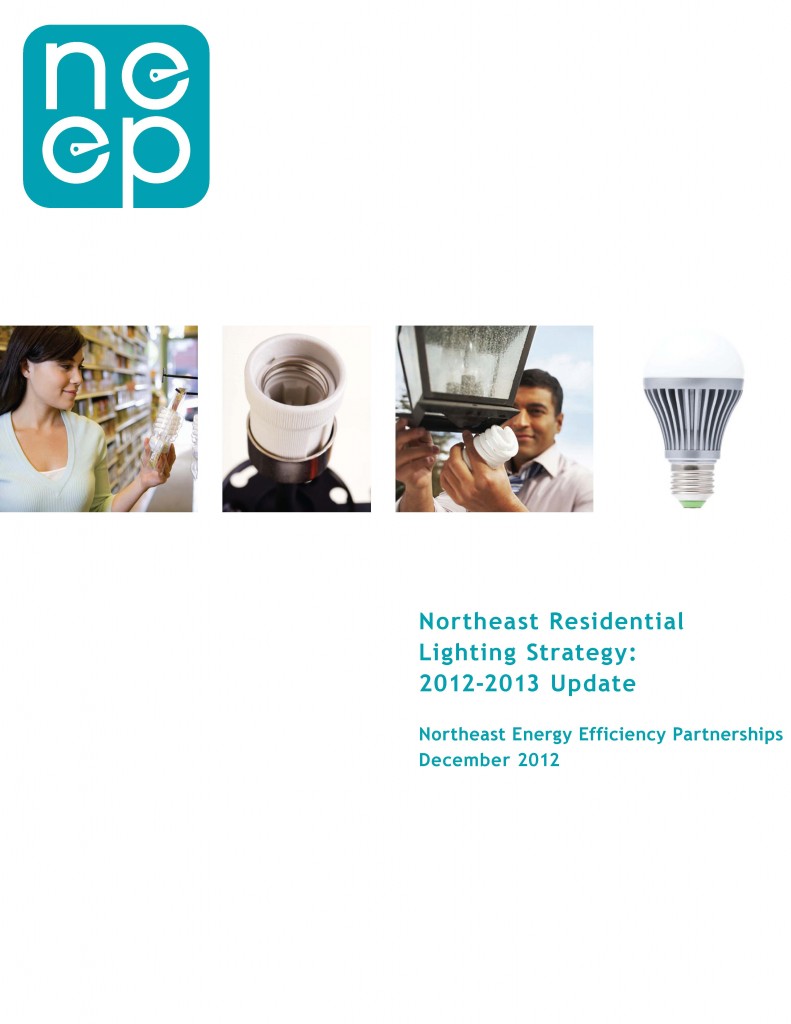
According to NEEP’s
Northeast Residential Lighting Strategy (RLS) Update, energy savings from efficient lighting continues to be the most cost effective measure for efficiency programs. In order to expand upon the savings from efficiency programs, ratepayer funded programs require robust support. The RLS update serves as a supplemental document to NEEP’s original
2012 Northeast RLS with current information, and not as a replacement.
The key recommendations from the RLS Update are largely consistent with the recommendations from the original RLS. They include:
- Continue support for ENERGY STAR CFLs
- Ramp up support for ENERGY STAR LEDs
- Continue early engagement with regulators and efficiency programs
- Pursue alternative, flexible program and regulatory approaches
- Deliver clear and consistent messages to consumers
- Collaborate regionally to achieve a 90 percent household socket saturation rate by 2020.
The only strategy element that has been removed, relative to the original RLS, is the promotion of 2X halogen lamps.
The RLS update also provides highlights and current developments due to an ever-changing lighting landscape. The following highlights include: recent advances in efficiency program design, developments in regulatory policies and EM&V activities, updated estimates of savings potential and costs associated with efficiency programs, revised trajectory of lighting technology introduction, and expands the region to include recently established District of Columbia Sustainable Energy Utility (DC SEU). Despite all of the improvements in the lighting landscape, including an estimated 34 percent increase in promoted bulbs, efficiency program administrators face the difficulty of relatively stagnant socket saturations.
The RLS Update is intended to give regional efficiency programs, regulators, policy makers, industry, and other stakeholders a roadmap for the constantly evolving lighting market. This report demonstrates how the region can achieve essential energy savings in order to reach our goal of 90 percent efficient socket saturation. NEEP continues to emphasize the benefits from a more coordinated regional approach in realizing the savings potential from high efficiency residential lighting. For more information on High Efficiency Residential Lighting, please visit our
Resource Center.
 According to NEEP’s Northeast Residential Lighting Strategy (RLS) Update, energy savings from efficient lighting continues to be the most cost effective measure for efficiency programs. In order to expand upon the savings from efficiency programs, ratepayer funded programs require robust support. The RLS update serves as a supplemental document to NEEP’s original 2012 Northeast RLS with current information, and not as a replacement.
The key recommendations from the RLS Update are largely consistent with the recommendations from the original RLS. They include:
According to NEEP’s Northeast Residential Lighting Strategy (RLS) Update, energy savings from efficient lighting continues to be the most cost effective measure for efficiency programs. In order to expand upon the savings from efficiency programs, ratepayer funded programs require robust support. The RLS update serves as a supplemental document to NEEP’s original 2012 Northeast RLS with current information, and not as a replacement.
The key recommendations from the RLS Update are largely consistent with the recommendations from the original RLS. They include:
